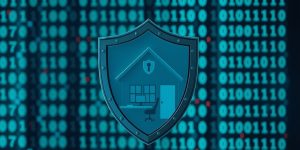As businesses increasingly embrace digital transformation, the threat of cybercrime looms larger than ever. The outlined cybersecurity tips, including regular data backups, software updates, antivirus protection, firewalls, spam filters, encryption, and multifactor authentication, collectively form a comprehensive defense strategy. Consequently, by integrating these measures and conducting regular tests and audits, businesses can fortify their cyber defenses. This proactive approach safeguards against evolving threats in the dynamic digital landscape.
Key Takeaways
- Regular data backups, software updates, and antivirus protection are fundamental for malware defense.
- Implementing firewalls and spam filters adds an extra layer of defense against cyber threats.
- Encryption plays a crucial role in protecting sensitive data from unauthorized access.
- Utilizing multifactor authentication methods enhances security by requiring multiple forms of verification.
- Regular tests, audits, and updates are essential to maintain a strong defense against evolving cyber threats.
Strategies for Malware Defense
Regular Data Backups
In the digital age, the importance of regular data backups cannot be overstated. By ensuring that all critical data is duplicated and stored securely, startups can mitigate the risks associated with data loss or corruption due to malware attacks. A multi-layered approach to data backup is recommended, involving both on-site and off-site storage solutions.
Regular incremental backups should be scheduled to minimize data loss. This practice allows for the recovery of the most recent data, reducing the impact of any intrusion or system failure.
To illustrate the process, consider the following steps for effective data backup:
- Identify critical data that requires regular backups.
- Choose a reliable cloud storage solution with robust security features.
- Encrypt data during transfer and storage to protect against unauthorized access.
- Store a separate copy of the data on a portable device, kept offsite.
- Schedule backups to occur automatically, ensuring consistency and reducing the risk of human error.
By adhering to these practices, startups can create a resilient defense against the potential devastation of malware-induced data loss.
Software Updates
Keeping your operating system and applications up-to-date is a cornerstone of cybersecurity. Regularly installing updates is vital for patching vulnerabilities that could be exploited by malware. For instance, Windows users can access updates by navigating to "Settings," then "Update & Security," and selecting "Check for updates." Similarly, macOS users should use the "Software Update" feature found in "System Preferences." Linux distributions vary, but all maintain a method for applying necessary security patches.
It is crucial to not only update your OS but also to ensure that all software, especially web browsers and security tools, are running the latest versions.
Here is a simple checklist to help you stay on top of software updates:
- Verify that automatic updates are enabled for your OS and key applications.
- Manually check for updates on a regular basis, especially after being notified of a major security threat.
- Reboot your system if required to complete the installation of updates.
- Keep a record of update history to monitor for any irregularities or missed updates.
Antivirus Protection
Antivirus and anti-malware software form the cornerstone of basic digital hygiene for any startup. These programs are designed to detect and neutralize malware before it can compromise your systems. They operate by scanning files and directories for malicious patterns, removing or quarantining threats, and continuously updating their databases to recognize new forms of malware.
Regular updates and scans are vital to maintain the efficacy of these tools. It is not enough to simply install antivirus software; it must be kept up-to-date to protect against the latest threats. Consider the following steps to ensure robust antivirus protection:
- Schedule regular scans to detect malware early.
- Keep your antivirus software updated with the latest malware definitions.
- Train employees to understand the importance of antivirus measures.
By prioritizing antivirus protection, startups can significantly reduce their vulnerability to cyber attacks. Implementing a robust antivirus strategy is not just about technology; it’s about cultivating a culture of security awareness within the organization.
Implementing Cybersecurity Measures
Firewalls
Firewalls serve as the first line of defense in network security, functioning as a barrier that separates trusted internal networks from potentially harmful external ones, such as the internet. They are essential for preventing unauthorized access, monitoring, and filtering network traffic to block malicious data or patterns.
Different types of firewalls cater to specific needs and offer unique features:
- Network Firewalls: Manage both incoming and outgoing communications, with variations like static and stateful firewalls.
- Host-Based Firewalls: Control network traffic for individual devices, providing granular control over device communications.
- Web Application Firewalls (WAF): Specialize in protecting web applications by operating at the application layer to thwart threats like injection attacks and DDoS.
- Next-Generation Firewalls (NGFW): Integrate traditional firewall capabilities with network intrusion prevention, offering a more holistic approach.
Proxy Firewalls, operating at the application level, provide deep packet inspection and stateful inspection, further enhancing security measures. The modern advancements in firewall technology have led to sophisticated features such as DNS filtering and intrusion prevention, which are crucial for a robust cybersecurity posture.
Cybersecurity breaches pose a silent threat to businesses, impacting reputation and legal consequences. Prevention through security measures, employee education, and incident response planning is crucial.
Spam Filters
Spam filters act as a critical line of defense in the battle against malware. By scrutinizing incoming emails, these filters can detect and quarantine unsolicited or harmful messages before they reach the inbox. This proactive approach is essential for preventing phishing attacks, which often masquerade as legitimate communications to deceive employees into divulging sensitive information or installing malware.
Spam filters not only protect against direct threats but also serve to maintain the integrity of your business communications. By reducing clutter and potential distractions, they help ensure that important emails receive the attention they deserve. To maximize the effectiveness of spam filters, consider the following steps:
- Regularly update filter settings to adapt to evolving threats.
- Customize filters to address specific business needs and risks.
- Train employees to recognize and report any emails that bypass the filters.
It is imperative to maintain vigilance and continuously refine your spam filter configurations to keep pace with the ever-changing landscape of digital threats.
Protect your website from malware by using online scanners, security plugins, and Google tools. Backup your website regularly using plugins, SSH, or SFTP for data safety.
Encryption
Encryption is a cornerstone of cybersecurity, transforming readable data into a secure format that can only be deciphered by authorized parties. Confidentiality is paramount, ensuring that sensitive information remains accessible solely to those with permission. Two primary types of encryption are commonly employed:
- Symmetric Encryption: Utilizes the same key for both encrypting and decrypting data. While fast and efficient, it necessitates rigorous key management.
- Asymmetric Encryption: Employs a pair of keys—a public key for encryption and a private key for decryption. This method is more secure but also slower in comparison to symmetric encryption.
Encryption is not just about protecting data at rest; it is vital in securing data transmission, particularly in scenarios like online banking, confidential communications, and safeguarding sensitive information.
The integrity of data is also a critical aspect, with cybersecurity measures such as checksums, digital signatures, and version controls playing a pivotal role in maintaining data accuracy and trustworthiness. It is essential to understand that encryption is part of a broader security strategy, which should include robust security measures, an awareness culture, and incident response planning to mitigate the vulnerabilities of small enterprises to cyber threats.
Enhancing Defense with Multifactor Authentication
Setting Up Authentication Methods
Implementing multifactor authentication (MFA) is a critical step in fortifying your startup against digital threats. MFA requires users to provide two or more verification factors to gain access to a resource, which significantly reduces the risk of unauthorized access. To set up MFA effectively, consider the following steps:
- Identify sensitive systems and data that require enhanced security.
- Choose a reliable MFA solution that fits your company’s needs and budget.
- Educate your employees on the importance of MFA and how to use it properly.
- Integrate MFA with your existing security infrastructure for a seamless user experience.
Employing MFA, along with strong, unique passwords for each account, adds an extra layer of protection. It makes it more challenging for hackers to gain unauthorized access to your data.
Regularly updating and auditing your MFA setup is crucial to ensure its effectiveness. Conduct frequent tests to evaluate the resilience of your system against potential threats. These assessments involve simulated attacks, vulnerability analyses, and comprehensive reviews to identify and mitigate any weaknesses.
Utilizing Biometric Verification
In the realm of cybersecurity, biometric verification stands as a robust pillar in the architecture of multi-factor authentication (MFA). Biometric data, by its unique nature, significantly reduces the risk of unauthorized access. This form of authentication relies on the physical characteristics of individuals, such as fingerprints, facial recognition, or iris scans, to confirm identity.
Biometric systems can be integrated with other security measures to create a layered defense strategy. For instance, combining biometric verification with a strong passphrase can greatly enhance the security of sensitive data. It is important to note, however, that while biometrics offer a high level of security, they are not infallible and should be part of a comprehensive security approach.
Biometric verification systems must be regularly updated and maintained to ensure their effectiveness. Just like any other security component, they can become vulnerable over time if not properly managed.
The implementation of biometric verification requires careful planning and consideration of privacy concerns. It is essential to safeguard the biometric data to prevent any potential misuse or breach. The table below outlines the key considerations when implementing biometric verification:
| Consideration | Description |
|---|---|
| Privacy | Ensure compliance with data protection regulations and user consent. |
| Security | Protect biometric data with encryption and secure storage. |
| Reliability | Choose biometric methods with low false acceptance and rejection rates. |
| User Experience | Implement user-friendly systems that do not impede access for authorized users. |
Implementing Time-Based Tokens
Time-based tokens add a dynamic layer to authentication processes, making it significantly harder for unauthorized users to gain access. These tokens are generated at regular intervals, often every 30 to 60 seconds, ensuring that each code is temporary and unique.
To effectively integrate time-based tokens into your startup’s security framework, consider the following steps:
- Evaluate your current authentication system for compatibility with time-based tokens.
- Select a reputable time-based token solution that aligns with your company’s needs.
- Train your staff on the importance and usage of these tokens to ensure smooth adoption.
Remember, the goal is to create a robust authentication mechanism that complements your existing security measures. By doing so, you can significantly reduce the risk of data breaches and unauthorized access to sensitive information.
It is crucial to maintain a balance between security and user convenience to avoid creating unnecessary barriers that could hinder productivity.
In today’s digital age, safeguarding your business’s online presence is paramount. Enhance your defense with multifactor authentication and ensure your digital assets are protected against cyber threats. Visit WebsiteSecurity.net to discover our unbeatable website security solutions, tailored to keep your business secure. Don’t wait for a security breach to happen—take action now and fortify your website with our expert services.
Conclusion
In conclusion, as businesses increasingly embrace digital transformation, the threat of cybercrime looms larger than ever. The outlined cybersecurity tips, including regular data backups, software updates, antivirus protection, firewalls, spam filters, encryption, and multifactor authentication, collectively form a comprehensive defense strategy. Consequently, by integrating these measures and conducting regular tests and audits, businesses can fortify their cyber defenses. This proactive approach safeguards against evolving threats in the dynamic digital landscape. For starters, you can read more about common cyber security risks here.






